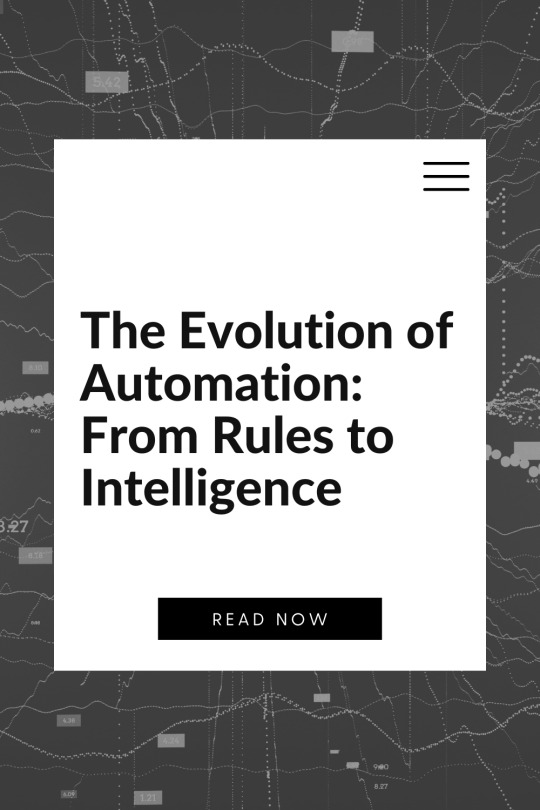#no-code
Explore tagged Tumblr posts
Text
The Future of ERP Integrations: How Low-Code and No-Code Platforms Are Changing the Game
Enterprise Resource Planning (ERP) systems’ primary goal has been to enhance business operations through streamlining critical processes such as finance or supply chain management. However, to be honest, the integration of the ERPs with other tools has not always been an easy task. It was really a nightmare for companies to integrate ERPs with the other tools. Time-consuming development cycles, huge IT costs, and some complex coding requirements totally turned ERP integrations into a mess for businesses.
But, here are low-code and no-code platforms like Odoo ERP that are quite the game-changers in ERP integrations. These contemporary remedies have made it much easier, faster, and cheaper to connect ERPs with other business applications. Let me explain to you how they are altering the landscape.

Breaking Down the Buzz: What Are Low-Code and No-Code Platforms?
Low-code platforms enable users to develop applications by designing visually with less code. They include visual design immediate productivity capabilities that promise to fast-track work for a broad spectrum of users in the organization.
No-code platforms take the automation level a little further allowing even average users like IT, ERP, engineers, business analysts, and business owners to create their systems the way they want without having to write a single line of code, and thus they can focus on tasks that matter.
By doing this, businesses just simply change their budget from standard, long, and costly ERP integrations to the cloud.
How Low-Code & No-Code Are Transforming ERP Integrations
Speed Like Never Before - Traditional ERP integrations used to be a time-consuming process and often took weeks, sometimes even months. The use of low-code/no-code tools has become revolutionary and businesses can now develop integrations in just a few days or hours. At the same time, pre-built Connectors and Templates, and automation tools certainly make the life of developers easier.
Reduced IT Dependency - In the past, ERP integrations necessitated the participation of IT teams or even external developers. Over time, the implementation of the low code/no code approach has increasingly led to newcomers getting involved. For instance, the business user can take up the role of the IT team, and as a result, the bottleneck is removed, and the tech teams do more strategic tasks.
Cost Savings Galore - The cost of hiring developers for custom ERP integrations can be hefty. On the other hand, Low-code/no-code solutions indeed offer the benefit of not needing much real developer input. As a result, such systems can be set up and maintained by non-technical employees alone.
Flexibility & Scalability - Companies are getting innovative and growing while software needs are also changing. With the help of low-code/no-code technologies, organizations can accomplish this by simply changing the integration on the go (so to speak). This way, there is no need to reinvent software every time there is a need for change.
Enforced Security & Compliance - No-code/low-code transformational strategies that are inherently secured and compliant mean that ERP integrations will be fulfilled with the required regulations hassle-free for IT teams.
Who’s Leading the Low-Code/No-Code Revolution?
Several players are shaking up the ERP integration landscape. Platforms like Odoo, Zapier, Mendix, OutSystems, and Microsoft Power Automate are leading the charge, making ERP integrations accessible to businesses of all sizes.
Is This the End of Traditional ERP Integrations?
No, it's not. Traditional coding is still very much a necessity for complex and highly customized integrations. However, low-code and no-code platforms are help in most cases to save time, money, and energy.
Odoo: A Top Low-Code ERP
Odoo is one of the best low-code ERP platforms, offering flexibility, automation, and easy customization. With its modular design and drag-and-drop tools, businesses can streamline operations without deep coding expertise.
Final Thoughts: The Future is Here
The days of painful, drawn-out ERP integrations are fading. Low-code and no-code platforms like Odoo are making ERP connectivity easier than ever, allowing businesses to focus on growth rather than technical roadblocks. If your company hasn’t explored these tools yet, now’s the time to jump in!
The future of ERP integrations is fast, flexible, and code-free—are you ready for the Odoo upgrade?
Read more: Click Here
3 notes
·
View notes
Text
So my sister is on vacation and has sent me a photo of the store she was buying clothes in.

I'm going to lose it.
48K notes
·
View notes
Text




Damn bro....
#deltarune#kris#susie#utdr#myart#fanart#when i saw those posts about kris being dog coded i immediately felt like i had to make something with that tumblr post#awoo-oooo 🥺
32K notes
·
View notes
Text






I've been seeing a lot of knight posts recently. pretty great
#i really do agree we need a kneeling knight emoji i'd use the FUCK out of that#can i tag this 'chivalry' or perhaps 'arthuriana'#shann talks shit#chivalry#arthuriana#maybe even#paladin#edit: thanks to the people reblogging this i now know of knightposting#knightposting#second edit: listen I didn’t hv an oc in mind when I compiled this but I just remembered that I do hv a knight oc#morghen coded#compilation post
73K notes
·
View notes
Text


would you still love me again?
#epic the ithaca saga#epic the musical#epic odysseus#epic penelope#odypen#epic the musical fanart#odysseus#penelope#the odyssey#gifs#my art#something different bc Odysseus is very Kakavasha-coded :] loyal scheming and loves his family
42K notes
·
View notes
Text

















obsessed with this baby hippo from thailand's khao khew zoo.. she has been so utterly betrayed by the world
#she's so derpy and gloopy#i really really want to visit this zoo next time i'm in thailand now#moo deng#hippo#animals#baby animals#zoo#hippopotamus#funny#nature#naturecore#thailand#she's so#animal crossing#coded#long post#sorry#cute
88K notes
·
View notes
Text
coding got me saying shit like “target the child” “assign its class” “override its inheritance” like the third wife of a dying oil baron discovering his of-age son born out of wedlock
53K notes
·
View notes
Text



my contribution to this trend🙇
#I really like that second one#puppy coded#my art#jayvik#arcane#jayce talis#viktor arcane#fanart#arcane fanart#illustration#art#Viktor I did you so dirty my bad ily tho
44K notes
·
View notes
Text

22K notes
·
View notes
Text

Republicans deliberately use coded language to trick people to vote for them and radicalize their group. Many don't even realize they're radicalized or what they're saying is even racist. This is why they think the Left is "over reacting" because the either know they're using coded language and don't care, or they don't know anything at all.
#us politics#donald trump#elon musk#project 2025#coded language#decoding the right#trump administration#president trump#trump presidency#trump project 2025#fight project 2025#fight against project 2025#translating#fuck republicans#republicans are evil#republican party
48K notes
·
View notes
Text

#girlblogging#girlblogger#just girly things#thought daughter#thoughts#this is what makes us girls#coquette#girl hysteria#hell is a teenage girl#girlcore#lana del rey#ldr#ultraviolence#female rage#female manipulator#female hysteria#femcel#manic pixie dream girl#girl interrupted#the virgin suicides#whisper girl#relatable#so me coded#not mine#just girly posts#girlhood#erotikmelancholia#theultimatechanelitgirl#girlblog#this is a girlblog
26K notes
·
View notes
Text

#art tag#trying to get better at image descriptions. thunbs up#homestuck#funny ass webcomic how do you copyright a hex code
17K notes
·
View notes
Text

#girlblogging#girlblogger#just girly things#thought daughter#thoughts#this is what makes us girls#coquette#girl hysteria#hell is a teenage girl#lana del rey#ldr#ultraviolence#female manipulator#female rage#female hysteria#manic pixie dream girl#girl interrupted#the virgin suicides#lisbon sisters#sofia coppola#relatable#im just a girl#girlhood#so me coded#nonchalant#whisper girl
34K notes
·
View notes
Text


#the thing is that maga was already loser-coded for a while but these people were banking on you to not call it out#why else do they get so pissy about cultural signifiers and ‘woke hollywood’ or whatever#politics#usa#twitter
42K notes
·
View notes
Text

The Evolution of Automation: From Rules to Intelligence
Automation has come a long way from simple, pre-programmed instructions to intelligent systems that can think and adapt. In the modern business environment, companies need more than just static workflows—they need automation that can evolve alongside their needs. As industries strive for greater efficiency and innovation, the distinction between rules-based automation and agentic AI becomes crucial. Understanding this difference is key to unlocking the next level of intelligent automation that can transform business processes.
What Is Rules-Based Automation?
Rules-based automation operates on predefined logic and static triggers, following a set of “if-this-then-that” conditions. It relies on structured decision trees to execute tasks within narrow parameters, making it reliable but inflexible.
Characteristics of Rules-Based Automation:
Predefined Logic: Follows strict, pre-programmed rules that do not change unless manually updated, limiting adaptability.
Limited Context Awareness: Operates within fixed decision trees, meaning it cannot interpret or respond to new data dynamically.
Best for Simple, Repetitive Tasks: Works well for structured, predictable processes such as form processing, email notifications, and workflow approvals.
While effective for handling repetitive tasks with fixed conditions, rules-based automation struggles in environments requiring flexibility and contextual decision-making, making it less suitable for complex, evolving processes.
What Is Agentic AI?
Agentic AI represents a paradigm shift in automation. Unlike traditional rule-based systems, agentic AI is an autonomous decision-maker that can learn, adapt, and act based on context. These AI agents analyze real-time data, refine their decision-making processes, and optimize workflows dynamically.

Core Capabilities of Agentic AI:
Context-Aware Decision-Making: Adapts based on real-time input and environmental changes, allowing for more responsive automation.
Self-Learning: Continuously improves by analyzing past outcomes, recognizing patterns, and refining strategies.
Autonomous Action: Makes intelligent decisions without requiring predefined rules for every scenario, reducing the need for human intervention.
Scalability: Efficiently handles complex, evolving business processes, making it suitable for enterprise-wide automation.
How Agentic AI Behaves Differently: Real-World Examples
To illustrate the power of agentic AI, let’s examine how it operates in various industries compared to rules-based automation.
Manufacturing: Predictive Maintenance
Rules-Based Automation: A system triggers maintenance alerts based on predefined time intervals or sensor thresholds, even if a machine doesn’t actually need servicing, leading to inefficiencies.
Agentic AI: Monitors equipment in real time, learns from historical data, predicts failures before they happen, and proactively schedules maintenance to prevent costly downtime. It continuously refines its model based on new sensor data and operating conditions, optimizing maintenance schedules dynamically to enhance equipment longevity.
Retail: Personalized Customer Engagement
Rules-Based Automation: Sends predefined marketing emails based on customer actions, such as abandoning a cart, without considering broader behavioral patterns.
Agentic AI: Analyzes customer behavior across multiple touchpoints, including past purchases, browsing habits, and engagement patterns. It predicts preferences and delivers tailored recommendations in real-time, adjusting interactions dynamically based on customer responses to improve engagement and conversion rates.
Finance: Fraud Detection
Rules-Based Automation: Flags transactions based on rigid set thresholds (e.g., transactions above $5,000 in a foreign country), leading to false positives and unnecessary security holds.
Agentic AI: Detects anomalies by analyzing transaction patterns across time and different user behaviors. It learns from evolving fraud techniques, dynamically adjusting fraud detection models to minimize false positives while improving fraud prevention, ensuring a more accurate and secure transaction monitoring system.
“Rules-based systems are limited by what they know. Intelligent systems are powered by what they can learn.” — Andrew Ng, Co-founder of Coursera and AI expert
Where Agentic AI Excels: Dynamic Environments
Agentic AI thrives in industries and use cases where static rules fail to accommodate rapid changes, including:
Healthcare: AI-driven diagnostics that refine assessments based on patient history, evolving medical research, and real-time symptoms.
Supply Chain & Logistics: Adaptive route planning that responds to traffic, weather, and supply disruptions in real time, optimizing delivery efficiency and reducing costs.
Cybersecurity: Threat detection systems that learn from attack patterns and adapt to new security risks instantly, preventing breaches before they occur.
Dispelling Misconceptions: Agentic AI Is More Than a Chatbot
One common misconception is equating agentic AI with advanced chatbots. While chatbots interact with users within predefined conversation flows, agentic AI operates with a higher level of autonomy, handling complex decision-making beyond simple dialogues.
Key Differences:
Chatbots: Follow structured conversations and predefined responses, making them useful for customer support but limited in adaptability.
Agentic AI: Acts autonomously, learns from interactions, and makes decisions beyond predefined scripts, enabling more intelligent automation and problem-solving.
The Future of Work: Embracing Agentic AI for Transformation
As organizations seek to scale automation, agentic AI presents a transformative opportunity to redefine work processes and improve efficiency.
Key Benefits:
Greater Maintainability: Reduces the burden of constant rule updates, as AI agents self-optimize over time based on new data and outcomes.
Enhanced Scalability: Adapts to growing business complexity without requiring extensive manual intervention, allowing for more sustainable growth.
Improved Outcomes: Delivers smarter automation by continuously learning, refining workflows, and making data-driven improvements.
Key Takeaways:
Rules-based automation relies on fixed logic and is best for predictable, repetitive tasks.
Agentic AI introduces context-driven decision-making, enabling adaptability and learning.
Industries such as manufacturing, retail, healthcare, and finance stand to gain the most from agentic AI.
Unlike chatbots, agentic AI acts autonomously and makes real-time decisions beyond scripted interactions.
Businesses that adopt agentic AI can unlock new efficiencies, scalability, and innovation, positioning themselves for long-term success.
Unlocking the Potential of Agentic AI for Your Business
As automation continues to evolve, businesses that embrace agentic AI can unlock unprecedented efficiency, adaptability, and innovation. Unlike static rule-based systems, AI-driven agents dynamically respond to changing conditions, making them ideal for optimizing workflows and decision-making.
How to Get Started:
Identify areas where rigid automation limits flexibility.
Explore AI tools that incorporate agentic capabilities.
Pilot AI-driven agents in high-impact workflows.
Take the Next Step
Are static rules holding your workflows back? Imagine replacing bottlenecks with agility and rigid processes with intelligence. By adopting agentic AI, you unlock the power to enhance decision-making, optimize operations, and deliver exceptional customer experiences. The future of automation transcends efficiency—it’s about adaptability and intelligence. Now is the perfect time to harness AI that evolves alongside your business.
Learn More About DataPeak:
#datapeak#factr#saas#technology#agentic ai#artificial intelligence#machine learning#ai#ai-driven business solutions#machine learning for workflow#ai solutions for data driven decision making#ai business tools#aiinnovation#datadrivendecisions#data driven decision making#dataanalytics#digitaltools#digital technology#digital trends#no code#no-code
0 notes